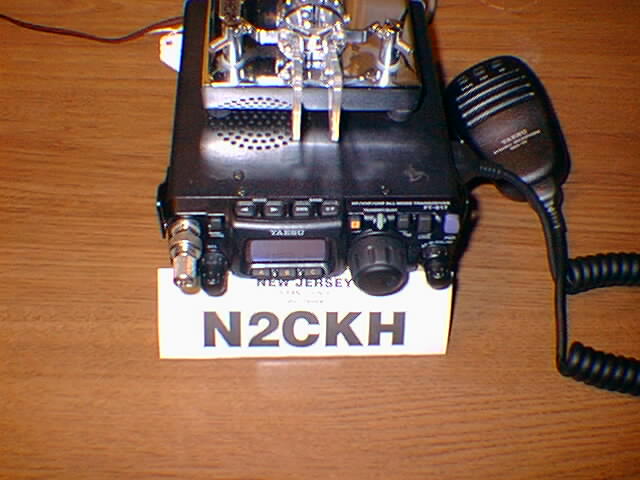
The Yaesu FT-817 QRP back pack transceiver has arrived after a one month wait.
In the photo below I have the Bencher sitting on top for a size comparison.
For those of you that do not get printed amateur news outside of the U.S., this radio made its debut in August 2000 in Japan and is a real hot item. It covers all amateur bands 160-2 meters plus 70cm with 5 watts output. The FT-817 is an all mode and runs off internal batteries or external power and has a BNC front mounted as well as rear SO-239 connector. It is more or less an scaled down FT-100 mobile radio. I found out about it in early October and immediately placed an order.
Since my current job has me doing a fair amount of travel and a company provided laptop is required equipment, the FT-817 with 5 watts will be making quite a bit of use of PSK31. Not that I will not make use of CW and give SSB a whirl, but face it, at that power level with less than an optimum antenna system, PSK31 will be the mode on HF.
This radio has some the latest features offered in todays radios, except for DSP, it sepecifically has PSK-L and PSK-U mode selections. I was pleased to find that it has has a CW-R mode. It also allows the installation of either an optional CW or SSB filter, but not both ! The CW filter is the obcious choice, although it is NOT yet available.
For the digital modes such as psk-31 I made a simple, light and cheap PTT cable from a CAT-5 cable and some other readily available parts at Radio Shack for manual PTT operation.
The FT-817 meets the true definition of QRP as defined by the ARRL and other organizations. QRP is recognized by most amateur organizations as 10 watts input, or 5 watts measured output. Five watts may not sound like much to those who consider 200 W low power, but the difference is not as great as you may think. Under actual conditions 5 watts will have little effect on your ability to work DX with a decent antenna system. The difference between QRP and 100 watts only 3 S units, between QRP and 1000 is only 5 S units. Also, QRP exemplifies the spirit of the Rules -- specifically 97.67(b), which states that " . . amateur stations shall use the minimum amount of transmitter power necessary to carry out the desired communications."
The first big recommendation that I can make from my use of the radio to date is that ALL users get a BNC 50 ohm terminator as used for ethernet network cards and have it on the front mounted BNC antenna connector when no antenna is connected. You must go from 6m to FM-1 (88-108) and FM-2 (108-135) to 2m to 70cm and setup for front or rear antenna connecter and get an R on the display to know which antenna connector is used for which band.